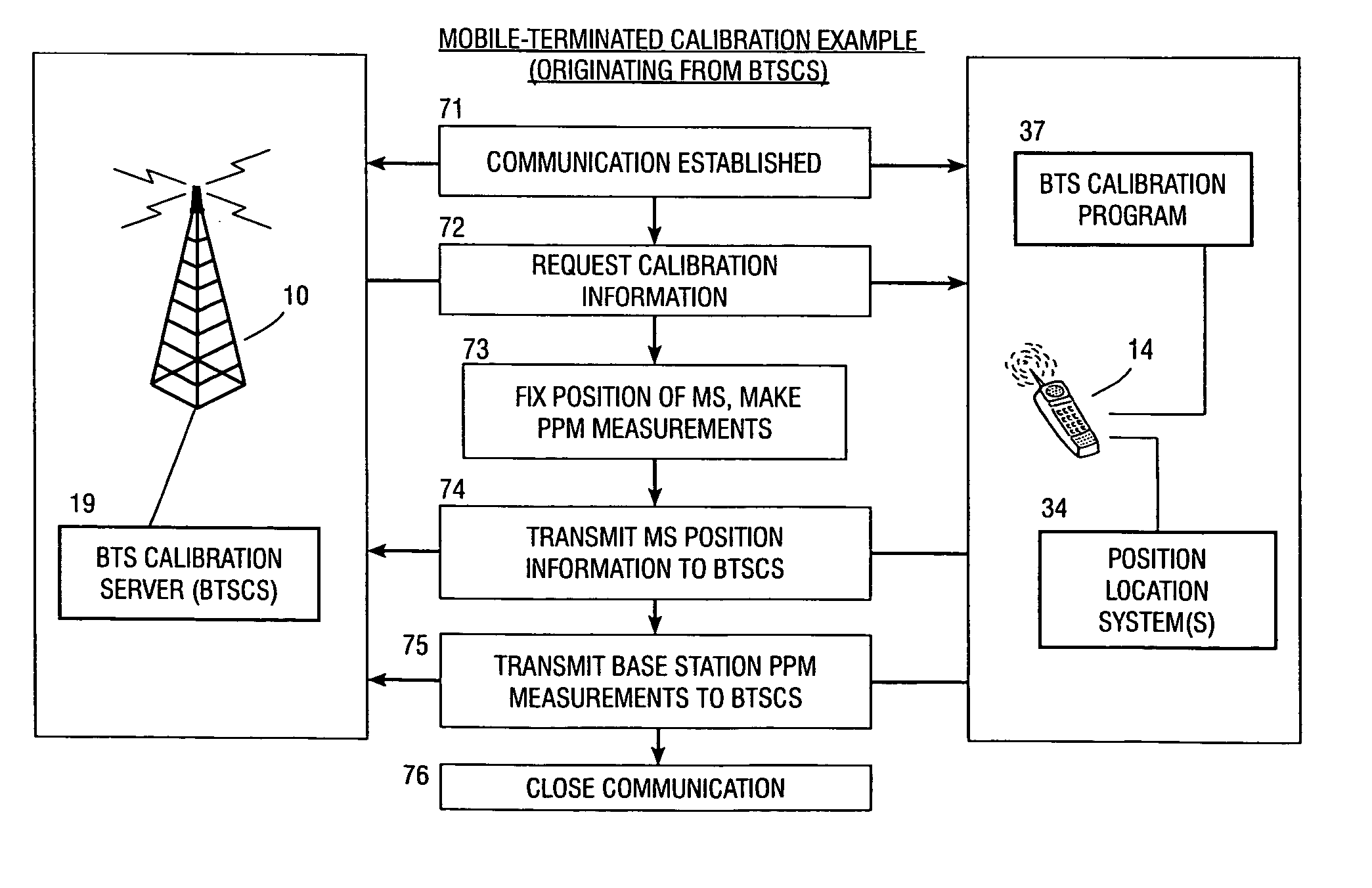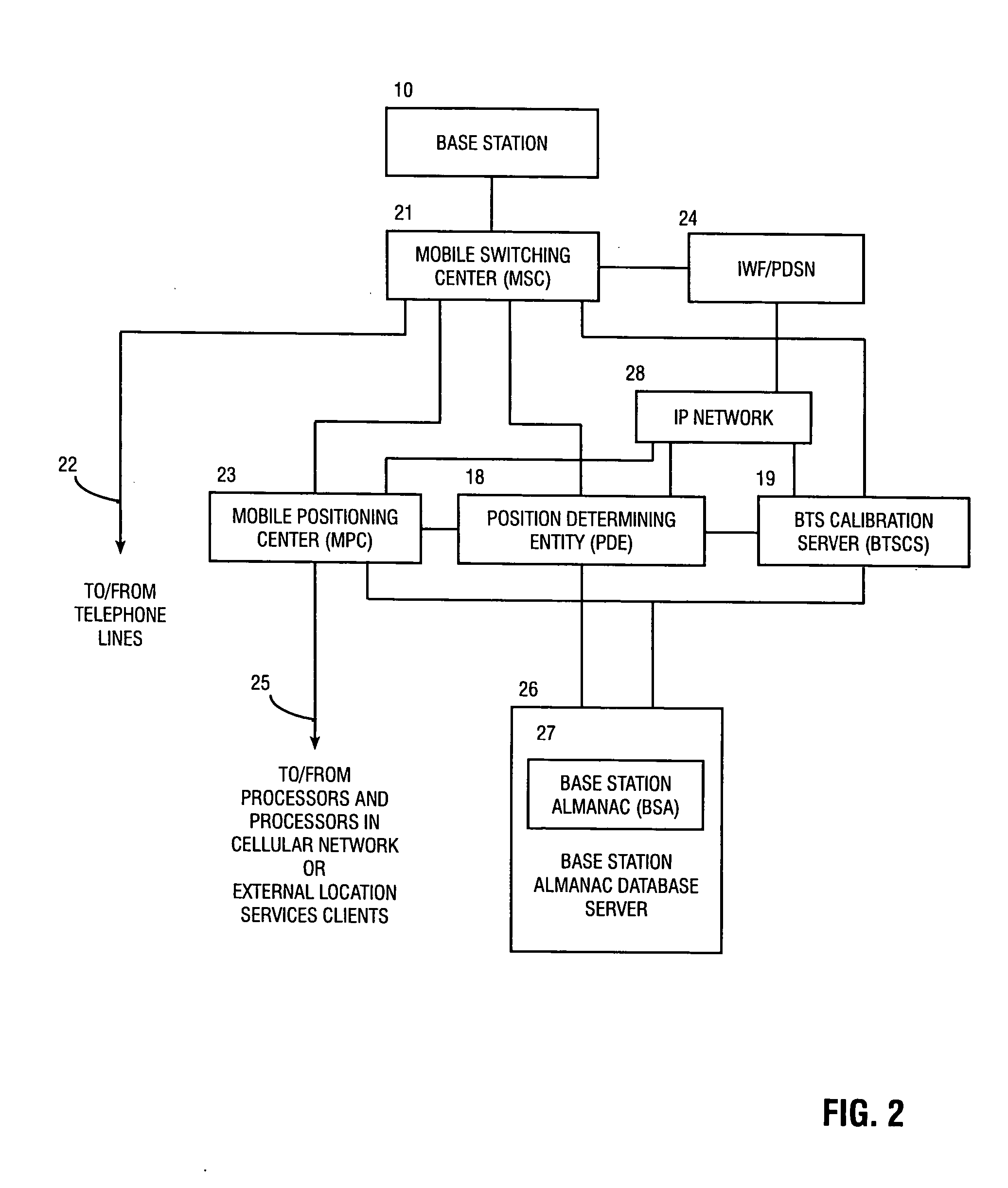Method and apparatus for determining location of a base station using a plurality of mobile stations in a wireless mobile network
a mobile station and mobile network technology, applied in the field of wireless communication systems, can solve the problems of time-consuming and expensive, inaccurate information, and inability to accurately locate the base station's antenna, and achieve the effect of reducing the cost of updating the almanac database using conventional techniques, saving time and money, and reducing the cost of acquisition
- Summary
- Abstract
- Description
- Claims
- Application Information
AI Technical Summary
Benefits of technology
Problems solved by technology
Method used
Image
Examples
Embodiment Construction
[0027] In the drawing, like numbers are used to denote like or similar elements.
[0028] Glossary of Terms and Acronyms
[0029] The following terms and acronyms are used in the detailed description:
[0030] AFLT (Advanced Forward Link Trilateration): a technique, implemented in CDMA systems, that computes the location of a mobile station (MS) from the mobile station's measured time difference of arrival of radio signals from the base stations.
[0031] BSA (Base Station Almanac): An almanac that includes location information and time correction information, among other information, for one or more base stations.
[0032] BSA message: The BSA message (e.g., the Provide Base Station Almanac message of the IS-801-1 protocol) includes fields that describe a BTS including its location and time correction values, among other information. The BSA message is typically sent to an MS upon request by the MS.
[0033] BTS (Base Station Transceiver Subsystem): (a / k / a base station or cell site): A fixed-p...
PUM
 Login to View More
Login to View More Abstract
Description
Claims
Application Information
 Login to View More
Login to View More - R&D
- Intellectual Property
- Life Sciences
- Materials
- Tech Scout
- Unparalleled Data Quality
- Higher Quality Content
- 60% Fewer Hallucinations
Browse by: Latest US Patents, China's latest patents, Technical Efficacy Thesaurus, Application Domain, Technology Topic, Popular Technical Reports.
© 2025 PatSnap. All rights reserved.Legal|Privacy policy|Modern Slavery Act Transparency Statement|Sitemap|About US| Contact US: help@patsnap.com



